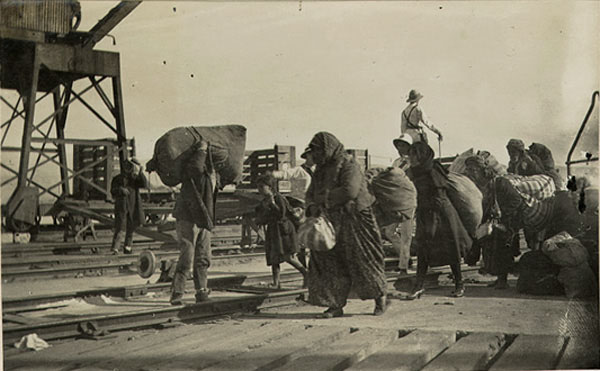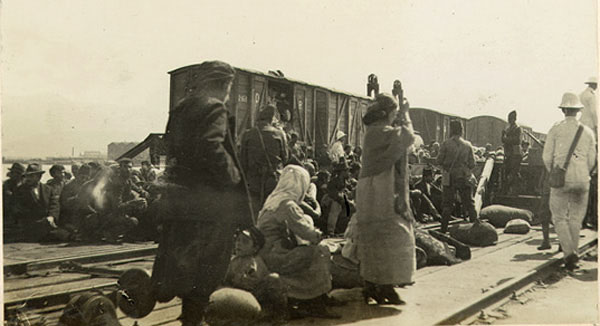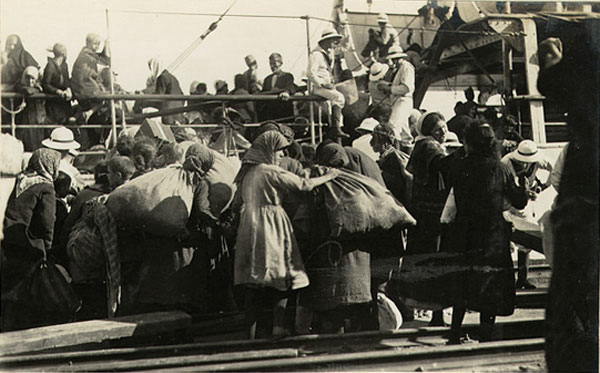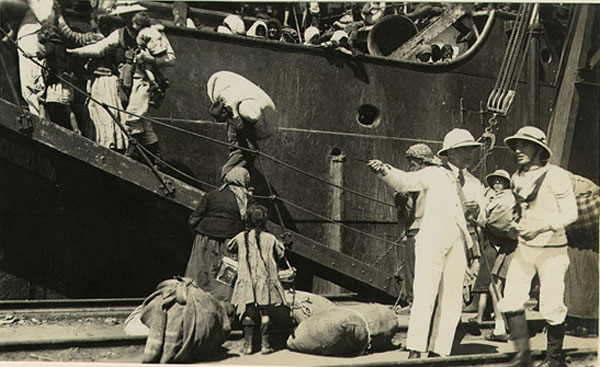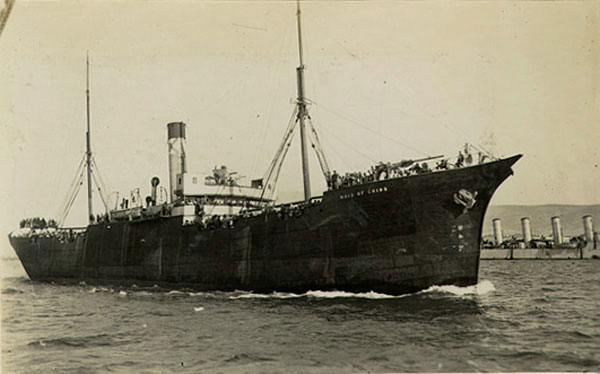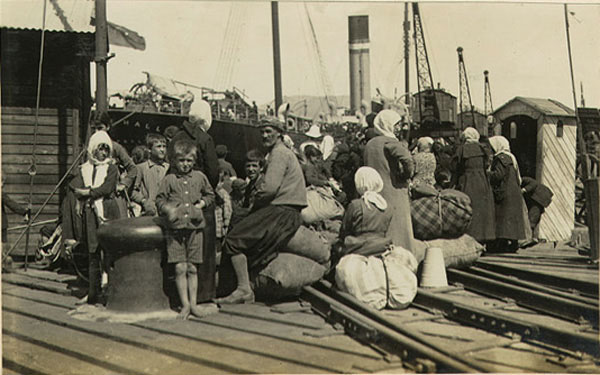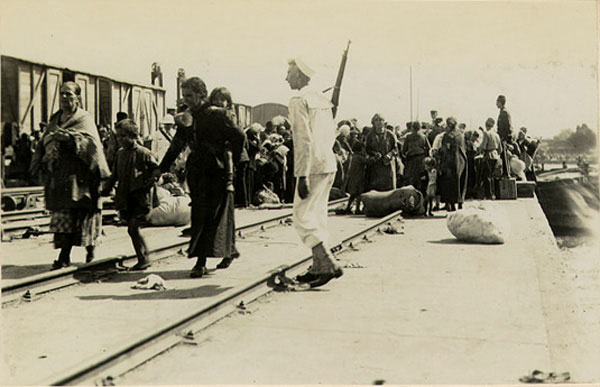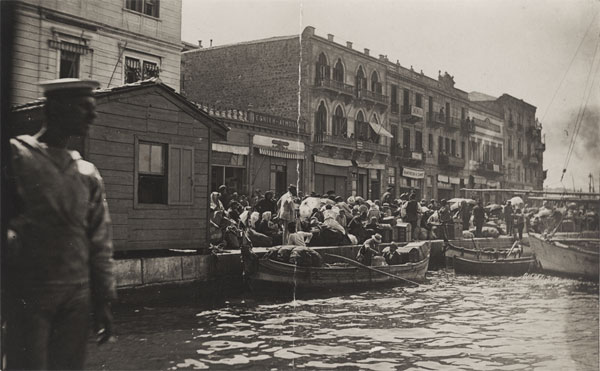|
|
Nothing is
known of the identity of the photographer of this series, and though the
Greek heritage of Smyrna/Anatolia is beyond the scope of the project, these
are considered revealing enough to highlight the conditions of this mass
exodus that has permanently altered the cultural demographics of the region. |
| |
The dress
of these refugees is effectively the same of Anatolian Turkish villagers,
pointing to the degree of cultural assimilation of these communities with
each other, and these people are almost certainly rural villagers from the
hinterland, possibly Turkish speaking Karamanli. |
| |
The
people seem to be shepherded by guards who are certainly not Turkish, but
Westerners, possibly British troops attached to the ‘inter-allied war commission’,
if this evacuation was taking place, as it seems likely during the period
of allied occupation of the city (1919-1922). |
|
|
|
|
|
The
transport taking them to a new life has the name written as ‘Maid
of Chios’, run by the Byron Steamship Co. (Embericos of London), having purchased it a year before (1921) from Germany, and originally a vessel of the Hamburg America Line and before German Rickmers Line. |
|
|
|
The
combination of railways and quayside would point to this location being
the Darağaç point in the north end of Punta, and there is a possibility
the railways were used to convey this group of refugees. |
|
|
